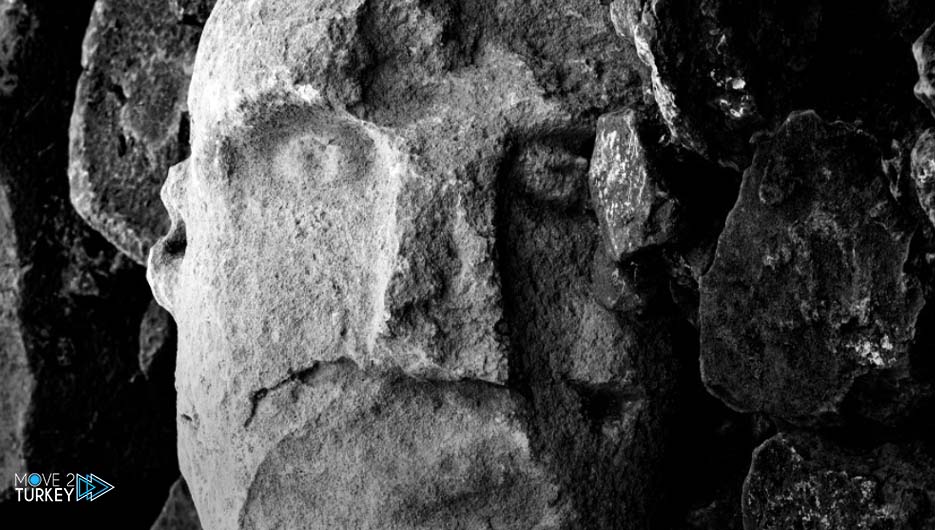
Turkish archaeologists found the first colored statue at the Gobekli Tepe site in Şanlıurfa state, which is considered “zero point in history” and its history extends back 12,000 years.
A human statue, considered the “most realistic”, was also found at the Kara Khantepe site, which is about 35 km from Gobekli Tepe in the state of Şanlıurfa, southeastern Turkey.
According to a statement by the Ministry of Culture and Tourism on Saturday, during the excavations carried out by the Ministry, a life-sized statue of a wild boar made of limestone was found in Gobekli Tepe.
This work, in which remains of red, white and black pigment appear on its surface, is the first colored statue discovered from that era.
The wild boar statue discovered in Gobekli Tepe is located on a platform that includes decorations, which are a symbol in the shape of the letter “H”, a crescent, two snakes, and three shapes believed to represent masks or human faces.
-Advertisement-
– Realistic human statue in “Qara Khan Tepe”
The 2.3-meter-high human statue with “realistic” facial expressions was found mounted on a mastaba in Karakhan Tepe, and is nominated as one of the most impressive examples of prehistoric art.
The features of the sitting statue resemble those of a dead person, with rib bones, spine and shoulder bones protruding.
A statue of an eagle placed on the wall and stone vessels left on the ground were also discovered in the area where the human statue was found.
The Gobekli Tepe site is one of the oldest places of worship on the face of the earth. It was discovered in 1963 by researchers from the American universities of Istanbul and Chicago, and excavation and research continued for about 54 years.
In 1995, many antiquities were discovered in the area, including “T”-shaped stone obelisks dating back to the Neolithic era, measuring between 3 and 6 meters in length and weighing between 40 and 60 tons, bearing drawings, animal shapes, and human statues.
In 2018, the Gobekli Tepe region was included on the UNESCO World Heritage List and continues to be the subject of many books, films, documentaries, series and animation films.






















